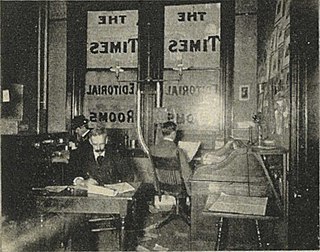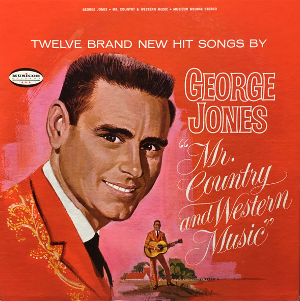
Giovanni Pierluigi da Palestrina was an Italian Renaissance composer of sacred music and the best-known 16th-century representative of the Roman School of musical composition. He had a lasting influence on the development of church music, and his work is considered as the culmination of Renaissance polyphony.

Performing arts are a form of art in which artists use their voices, bodies or inanimate objects to convey artistic expression. It is different from visual arts, which is when artists use paint, canvas or various materials to create physical or static art objects. Performing arts include a range of disciplines which are performed in front of a live audience.

Typography is the art and technique of arranging type to make written language legible, readable, and appealing when displayed. The arrangement of type involves selecting typefaces, point sizes, line lengths, line-spacing (leading), and letter-spacing (tracking), and adjusting the space between pairs of letters (kerning). The term typography is also applied to the style, arrangement, and appearance of the letters, numbers, and symbols created by the process. Type design is a closely related craft, sometimes considered part of typography; most typographers do not design typefaces, and some type designers do not consider themselves typographers. Typography also may be used as a decorative device, unrelated to communication of information.

The Book of the Courtier is a courtesy book or book of manners which dealt with issues of etiquette, behaviour and morals, particularly at princely, or royal courts. Courtesy literature can be traced back to 13th century German and Italian writers. The Book of the Courtier was written by Baldassare Castiglione over the course of many years, beginning in 1508, and was ultimately published in 1528 by the Aldine Press in Venice just before his death. An English edition was published in 1561.

Charades is a parlor or party word guessing game. Originally, the game was a dramatic form of literary charades: a single person would act out each syllable of a word or phrase in order, followed by the whole phrase together, while the rest of the group guessed. A variant was to have teams who acted scenes out together while the others guessed. Today, it is common to require the actors to mime their hints without using any spoken words, which requires some conventional gestures. Puns and visual puns were and remain common.

A bride is a woman who is about to be married or who is newlywed.

Editing is the process of selecting and preparing written, visual, audible, and film media used to convey information. The editing process can involve correction, condensation, organization, and many other modifications performed with an intention of producing a correct, consistent, accurate and complete work.

Iyengar Yoga, named after and developed by B. K. S. Iyengar, and described in his bestselling 1966 book Light on Yoga, is a form of Hatha yoga that has an emphasis on detail, precision and alignment in the performance of posture (asana) and breath control (pranayama). Strength, mobility and stability are gained through the asanas.
Equitation is the art or practice of horse riding or horsemanship.

The Science of Discworld III: Darwin's Watch (2005) is a book set on the Discworld, by Terry Pratchett, Ian Stewart and Jack Cohen. It is the sequel to The Science of Discworld and The Science of Discworld II: The Globe.

When Will Jesus Bring the Pork Chops? (2004) is the penultimate book written by George Carlin. He came up with the title because it offends three major religions. The book at first was not sold at Wal-Mart because its cover, which portrays Da Vinci's The Last Supper, depicted Carlin sitting next to the empty seat of Jesus. It is the fourth book by Carlin, the previous ones being Napalm and Silly Putty (2001), Brain Droppings (1997), and Sometimes a Little Brain Damage Can Help (1984). It was followed by the posthumous publication in 2009 of his "sortabiography" Last Words.

Vonones I of Parthia ruled the Parthian Empire from about 8 to 12 AD. He was the eldest son of Phraates IV of Parthia and was sent to Rome as a hostage in the 20s BC as surety for a treaty his father made with Augustus.
A corrector is a person or object practicing correction, usually by removing or rectifying errors.
"Break a leg" is an idiom in theatre used to wish a performer "good luck" in an ironic way. Well-wishers typically say "Break a leg" to actors and musicians before they go on stage to perform. The origin of the phrase remains obscure.
Bouffon is a modern French theater term that was re-coined in the early 1960s by Jacques Lecoq at his L'École Internationale de Théâtre Jacques Lecoq in Paris to describe a specific style of performance work that has a main focus in the art of mockery. The word gave rise to the English word buffoon.

Encyclopædia Britannica Online is the website of Encyclopædia Britannica, Inc. and its Encyclopædia Britannica, with more than 120,000 articles that are updated regularly. It has daily features, updates and links to news reports from The New York Times and the BBC. The 2010 edition of the Britannica was the last printed version and was sold until stock ran out in 2012.

Mr. Country & Western Music is an album by American country music artist George Jones released in 1965 on the Musicor Records label.

A roof lantern is a daylighting architectural element. Architectural lanterns are atop a larger roof and provide natural light into the space or room below. In contemporary use it is an architectural skylight structure. The term 'roof top lantern' is used to describe the lighted decorative lanterns atop taxi cabs in Japan, designed to reflect the cultural heritage of Japanese paper lanterns.

Fluting in architecture are the shallow grooves running along a surface.
















